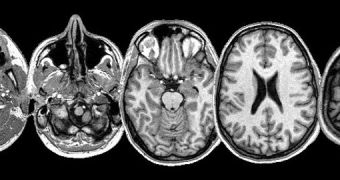One of the main obstacles associated with treating diseases affecting the human brain is the defense system nature set in place, in order to prevent microorganisms from migrating to the cortex. Experts are now investigating methods of opening up this barrier in order to develop advanced therapies.
Some of the diseases that researchers are desperately trying to find cures for include Alzheimer’s, Parkinson’s, traumatic brain injuries and cancer. But treatments for these conditions are currently rendered somewhat useless by the body's natural defense system.
Rensselaer Polytechnic Institute (RPI) assistant professor of chemical and biological engineering Pankaj Karande is now leading a research team in discovering ways of bypassing this obstacle.
Among the primary goals of the research is reducing the harmful side-effects that drugs which do pass through the barrier have on the cortex. Technologies to prevent this are possible, the scientist believes.
With support from the Goldhirsh Foundation and a $80,000 grant from the Alzheimer’s Association, the expert is now trying to open the natural and protective brain barriers. Achieving this could allow researchers to develop drugs targeted for specific areas of the brain.
At this point, the lack of such target specificity is one of the main reasons why side-effects occur, as drugs act all over the place, rather than where they are need most.
“You can have the best and most promising of drugs, but if it doesn’t go where it is needed, then it won’t be effective,” Karande explains.
“There are a lot of new discoveries within the area of drug development, even related to treatment of Alzheimer’s. There is not a drug discovery problem; drug delivery is really the challenge,” he adds.
The expert adds that the blood-brain barrier (BBB) is the main obstacle in the path of foreign contaminants, including beneficial drugs, trying to make their way into the brain.
Each of the blood vessels in this natural defense mechanism is lined with specialized cells that create an interlocked web. The net is so tight that only a very small amount of chemicals is allowed through.
“There are more blood vessels in the brain than anywhere else in the body. The supply lines are there, we simply need to understand how to open them,” the RPI team leader adds.
Karande says that the natural world can supply the inspiration researchers need. Some pathogens have developed mechanisms that allow them to pass through the BBB unharmed, and mimicking this action could enable the creation of targeted drugs.
“The most important challenge is going to be how we control this. We want to gently open the junctions in the brain, allow them to stay open for a short period of time during the delivery of a drug, and then reseal before any other potentially harmful materials can cross the barrier,” the expert says.

 14 DAY TRIAL //
14 DAY TRIAL //